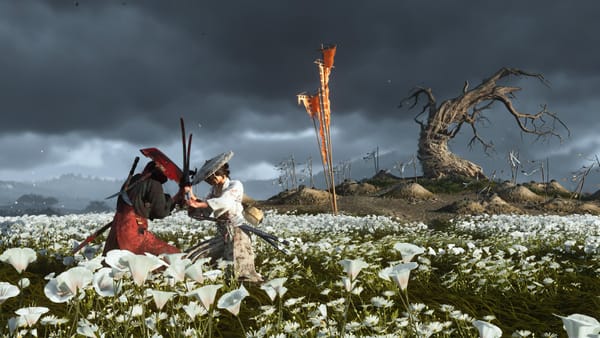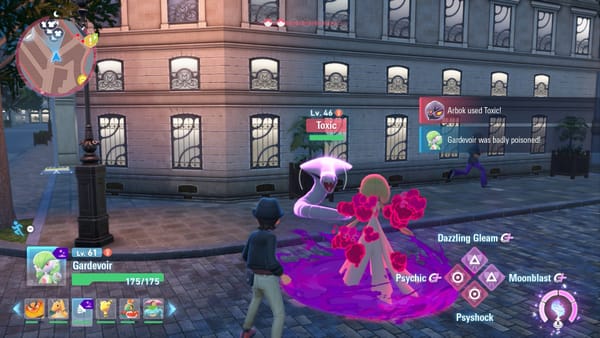Harley-Davidson & L.A. Riders is Crazy Taxi’s forgotten ancestor
One of a long line of classic Sega racing games, Harley is very different to Out Run and Daytona USA.
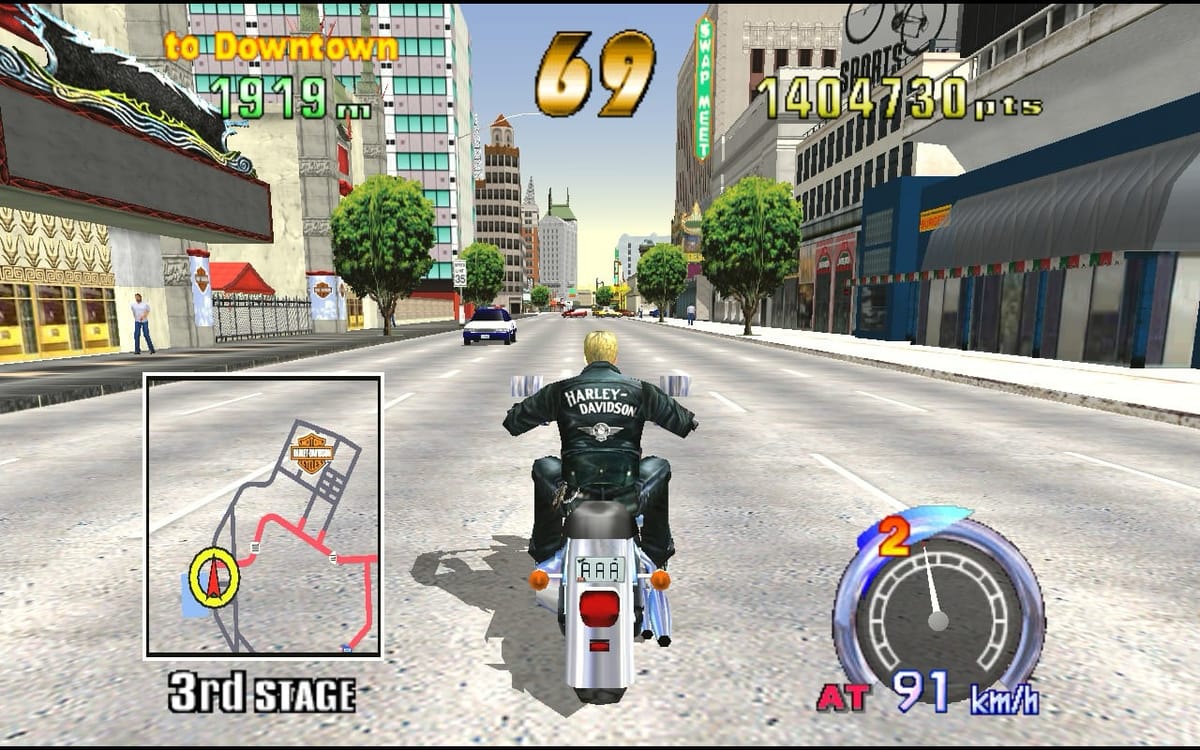
More than any other type of game, arcades in the 90s had a real “you just had to be there” vibe.
There was no internet to share news and the gaming magazines of the era rarely dedicated more than a couple of pages to arcade games. You never knew what existed beyond the arcades you visited. You never knew when something would appear at your local arcade — and when it’d be gone.
Most people won’t remember Sega’s Harley-Davidson & L.A. Riders. It was big, expensive, and not all that popular. I only played it a few times myself, but it was enough to make a big impression on me, because Harley did something I’d never seen before.
Harley was the latest in a long line of blockbuster arcade racing and driving games from Sega. From Out Run to Daytona USA, Sega pumped out a string of hits for well over a decade. But Harley wasn’t exactly a straight successor to those titles, because it was an open-world game.
Instead of a circuit, or a linear track, Harley-Davidson & L.A. Riders was set on a grid of streets and highways based on — you guessed it! — Los Angeles. It’s a basic approximation of the city, but still manages to include LAX, Beverly Hills, Hollywood and freeways like the infamous 405.
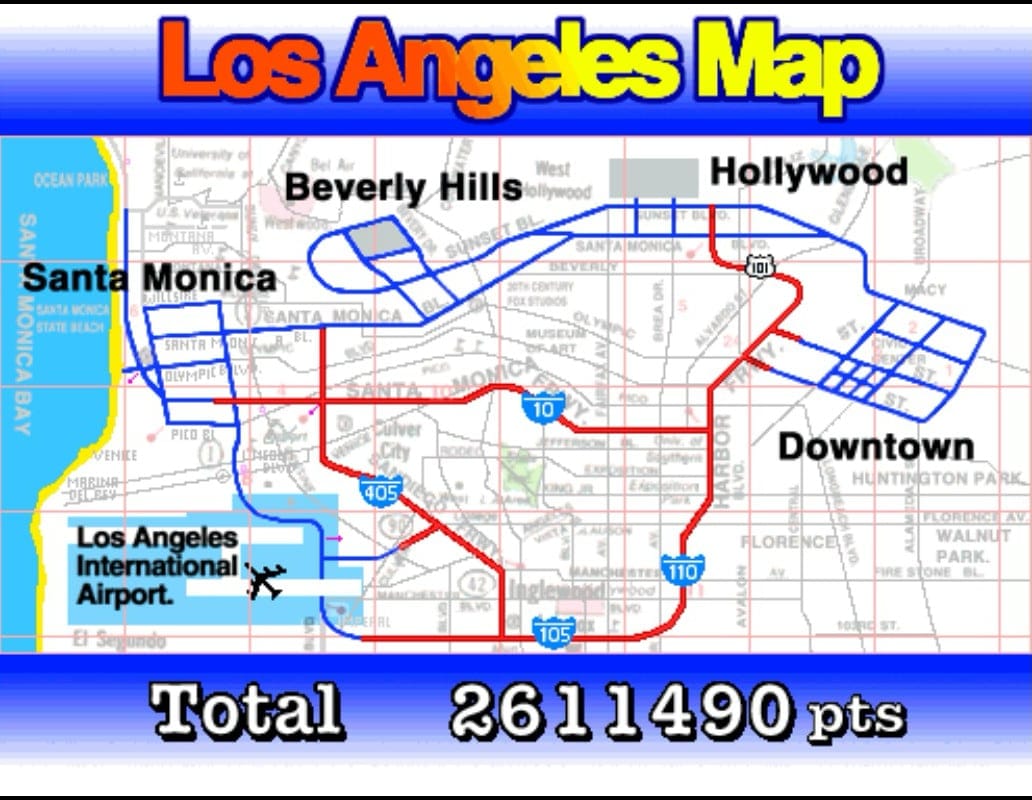
You’re given a time limit to reach a randomly assigned checkpoint somewhere on the map. Once you get there, you get more time to reach another randomly assigned checkpoint, and so on. There’s no set route or even a suggested one; you have to figure out how to get from, say, Hollywood to LAX by yourself. There isn’t even an arrow pointing you in the right direction, just a mini-map. So the challenge here isn’t just speed, but also navigation: what’s the best way to go? Should I take the highway, or the surface streets? Is there a shortcut through that block?
Where other racing games challenge you purely on racing skill, Harley demands that you also think about where you’re going. It’s not just about taking that corner at high speed; it’s about wondering whether you even need to take that corner at all.
Harley wasn’t the first open-world racer. The year before, Konami released the first GTI Club game, Rally Côte d’Azur. Going further back, Turbo Esprit was a free-roaming driving game from 1986. You might even be able to argue that Rally-X was the first open-world racing game; it’s probably closer to a maze chase game (think Pac-Man), but on a very basic level the concept of driving around a map to hit checkpoints in whatever order the player chooses before a timer runs out is broadly similar.
I didn’t play those games — for whatever reason, the GTI Club series never made it to the arcades around me, so it may as well have not existed in those pre-Internet days. And open world games in general were still in their infancy. Forget the revolution triggered by GTA3: Harley released at the same time as the very first GTA!
There’s also a personal reason Harley made such an impact on me. I lived in LA briefly when I was 10. The sprawling city, crisscrossed by massive freeways, was so different to the cramped streets of my densely-packed home town, Hong Kong. The idea of revisiting LA — of revisiting the neighborhoods and landmarks I knew so well — captivated me, and I eagerly sunk money into the arcade machine any time I saw it.
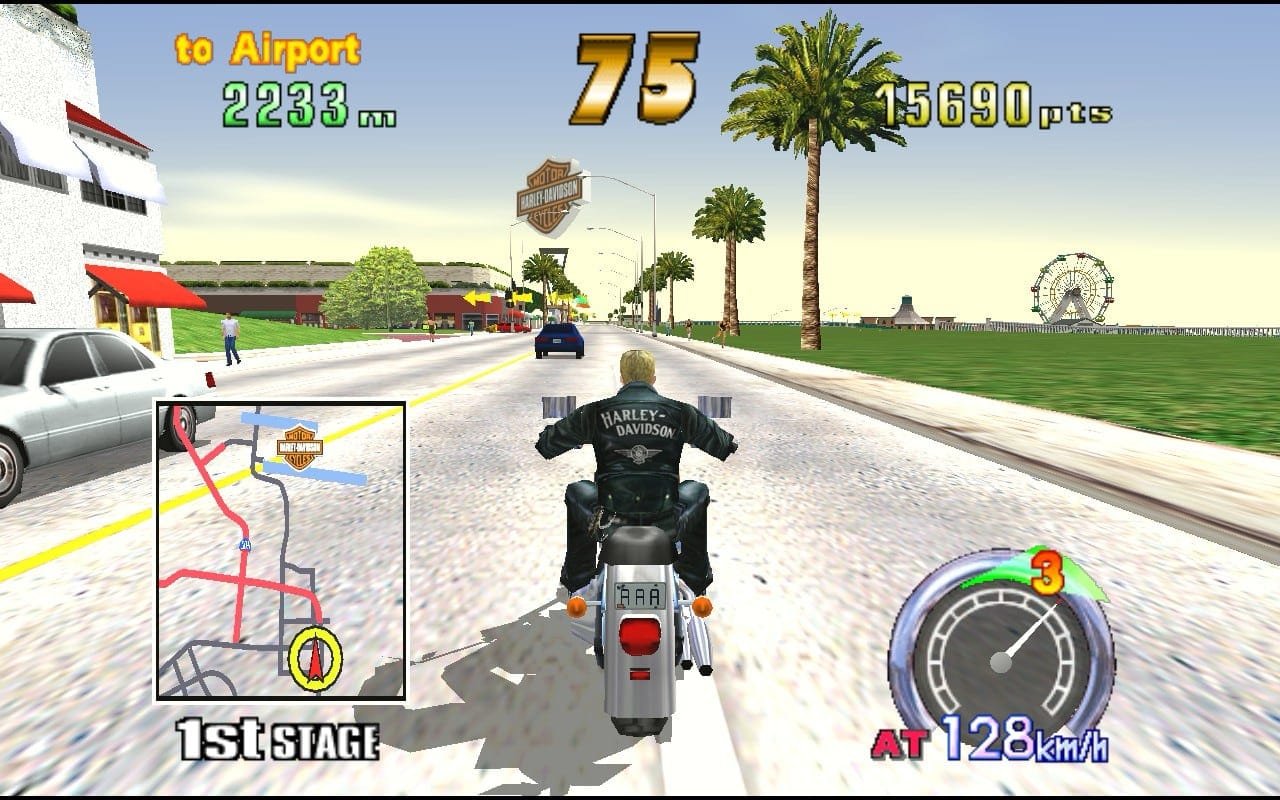
But I was one of the few who did. Harley was not a popular or well-known game, and despite my love for it, I can see why. Given that players needed time to think about their routes, Harley was a slower, more sedate experience than Sega’s other racing games of the era. Scud Race sent supercars hurtling through incredible vistas at high speeds; Harley sent you puttering around a large, low-rise city at a slower pace. And while Harley had multiplayer, with players free to roam the map and not confined to sharing a track, it didn’t have the same paint-rubbing intensity as Daytona.
Still, Harley paved the way for one of Sega’s biggest arcade hits: Crazy Taxi.
Released in the arcade in 1999 and on Dreamcast in 2000, Crazy Taxi is a madcap driving game where you’re rushing to pick up and drop off passengers at random spots around town. The faster you go, the more wild stunts you do (and the less you crash), the higher your cab fare.
There is no direct evidence that Sega AM3 based Crazy Taxi off of the work their counterparts at AM1 did on Harley, but there are clear links. A patent filed by Sega for concepts in an open-world driving game describes both Harley and Crazy Taxi. And Crazy Taxi directly improves on many of the base elements in Harley.
Crazy Taxi gives open world driving a purpose: Harley’s checkpoints are completely arbitrary, but it makes sense that a taxi needs to rush between seemingly random spots. Tracking your earnings through cab fares is a much simpler and more logical way to keep score than an opaque points system. And the ability to do stunts and tricks means there isn’t a dull moment in the game; you’re constantly looking for ways to increase your score.
Whether through the music or the moment-to-moment gameplay, Crazy Taxi is just full of life — and that energy is lacking from Harley. It wouldn’t be unkind to say that Harley is effectively Crazy Taxi without any of the crazy.
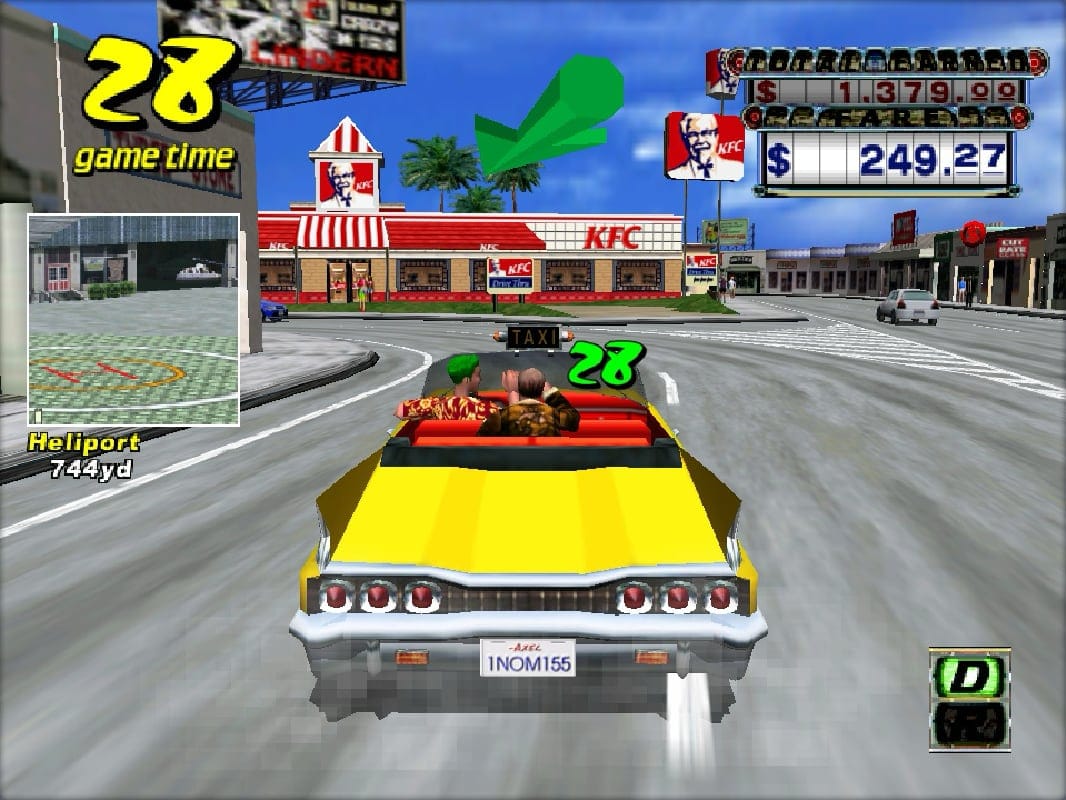
Crazy Taxi is the better game, but I have a soft spot for Harley. The intellectual challenge of plotting your own routes on top of testing your racing skill appealed to me; even better, it was set in a city I loved.
There is admittedly an element of absence making the heart grow fonder. Unlike Crazy Taxi, Harley was never released on home consoles. The only way to play it was an arcade, where it was a rare sight. I only ever managed to play it a handful of times before it disappeared from my local arcades. That was well over twenty years ago, and for a long time Harley was just a memory; this unique take on racing games that nobody else seemed to care enough about to remember.
But there’s a happy ending: last year I found an emulator for Steam Deck that plays Harley perfectly. And so I scratched a decades-long itch to replay the game, spending time with it without emptying my pockets of coins and rediscovering why this game was stuck in my head for so long. Harley-Davidson & L.A. Riders is a unique game, and one that deserves more than to serve as the forgotten ancestor to Crazy Taxi.




